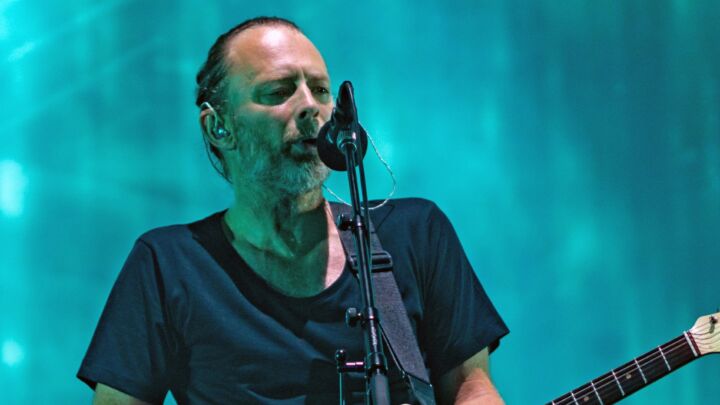Not falling, dancing
Such is choreographer Russell Maliphant’s eye for discipline that he can even make a ‘broken fall’ into a work of art.

Want to read spiked ad-free? Become a spiked supporter.
Mention modern dance to most people and their feet tend to go into an involuntary shuffle, a sign that they would rather you change the subject quick because they haven’t got a clue what you’re talking about. Mention experimental dance and you get an eyes-glazed-over look that says: ‘For god’s sake, somebody set the fire alarm off so that I can escape from this pretentious twaddle….’
On paper, the choreographer Russell Maliphant would set all those alarm bells ringing. The policy blurb on the Russell Maliphant Company website says the company aims to ‘utilise and integrate the diverse ability and understanding embodied by experienced individual participants and create contemporary movement-based work which stimulates, engages and entertains its audience’. Hmmm. Anybody reading that would not have been inspired to tune in to the documentary about Maliphant’s work on Saturday on Channel 4, followed by a film showing three dances choreographed by him and performed by Sylvie Guillem, William Trevitt and Michael Nunn of the Ballet Boyz. Well, it would have been their loss, because it was thrilling stuff.
Watching the law of physics being used to defy and redefine our physicality in Maliphant’s choreography made me realise how we – Maliphant included – have come to denigrate words like ‘experimental’, ‘diverse’ and ‘entertaining’. Observing Maliphant and his company rehearse in the documentary Light and Movement, which examined Maliphant’s collaboration with his lighting director Michael Hulls, you realised that what they mean by ‘diverse ability’ is the different technical strengths and weaknesses of dancers at the top of their profession. This used to be referred to as ‘range’ in older times when excellence and talent were applauded.
Recognising ‘diversity’ in art has not always been about social inclusion, self-esteem for all, or seeing art as a panacea for the ills of society, as it seems to be these days. Rather, in Maliphant’s work, it is about taking what it is that makes a particular dancer excellent and making that his or her signature. It is what ballerina Darcy Bussell described recently on BBC Radio’s Desert Island Discs, when she told of how Kenneth Macmillan recognised the tremendous energy of her ‘jump’ and made her principal dancer of the Royal Ballet at the tender age of 20.
Maliphant was doubly interesting when he spoke of recognising the abilities of his dancers: at the same time that he can recognise their strengths – for example, somebody may have extraordinary ‘push’ that he can work – he must also pinpoint where a dancer is technically weak and make them work on that weakness. Imagine that: asking someone to have the discipline to resolve their artistic weaknesses instead of just celebrating the self-expression of the whole thing.
The idea of discipline seems to be centre stage in the Russell Maliphant Company’s work. This aspect of the film turned the cliché of experimentation on its head. So rather than a free-for-all mishmash of ideas or self-indulgent flights of imaginative fancy, we watched as ideas were tested and refined in the white hot heat of the choreographer’s discipline – the choreographer knowing that his vision can only be translated and made real through precise physical movement.
One dancer talked about how ideas are turned into ‘absolutely specific’ movements once they reach the performance stage, and it is then that ‘you start getting notes about your fingers being in the wrong place’. The relationship with light, through the work of the company’s lighting director Hulls, reinforces the need for absolute physical discipline. The company choreographed one work – Transmission – for minute squares of light in which the body must move precisely to present an overall aesthetic vision.
It might sound as if all this discipline and preciseness would produce the most mechanical and inhuman of movements. On the contrary, it is what enables the dancers to sublimate the physical, to create art out of physical movement. Nowhere was this more evident than in the final of the trio of dance films that were shown, Broken Fall.
Broken Fall took the most fatalistic of human physical conditions – falling – and turned it into a sublime work of art. Dancer Guillem’s Amazonian elasticity was seemingly in constant freefall, stretched, spun and flung between the other dancers, Nunn and Trevitt. The apparent physical ease of transitions was striking. There was also something physically exhilarating in the risk and trust involved: often, one false move would have meant face-splatter time for Guillem. The audience was drawn into a feeling, an understanding of falling, which made that physical action seem somehow controllable, understandable.
Many risky sports enthusiasts like to jump off buildings and cliffs (complete with parachute, of course) in the belief that there is no greater freedom than to fall or fly through the air. What is free about giving yourself over to the forces of gravity? By contrast, Broken Fall was a work, not of freefall, but of discipline; not of giving into falling but transforming it into an expression of human physicality.
Celebrate 25 years of spiked!
A media ecosystem dominated by a handful of billionaire owners, bad actors spreading disinformation online and the rich and powerful trying to stop us publishing stories. But we have you on our side. help to fund our journalism and those who choose All-access digital enjoy exclusive extras:
- Unlimited articles in our app and ad-free reading on all devices
- Exclusive newsletter and far fewer asks for support
- Full access to the Guardian Feast app
If you can, please support us on a monthly basis and make a big impact in support of open, independent journalism. Thank you.






Comments
Want to join the conversation?
Only spiked supporters and patrons, who donate regularly to us, can comment on our articles.